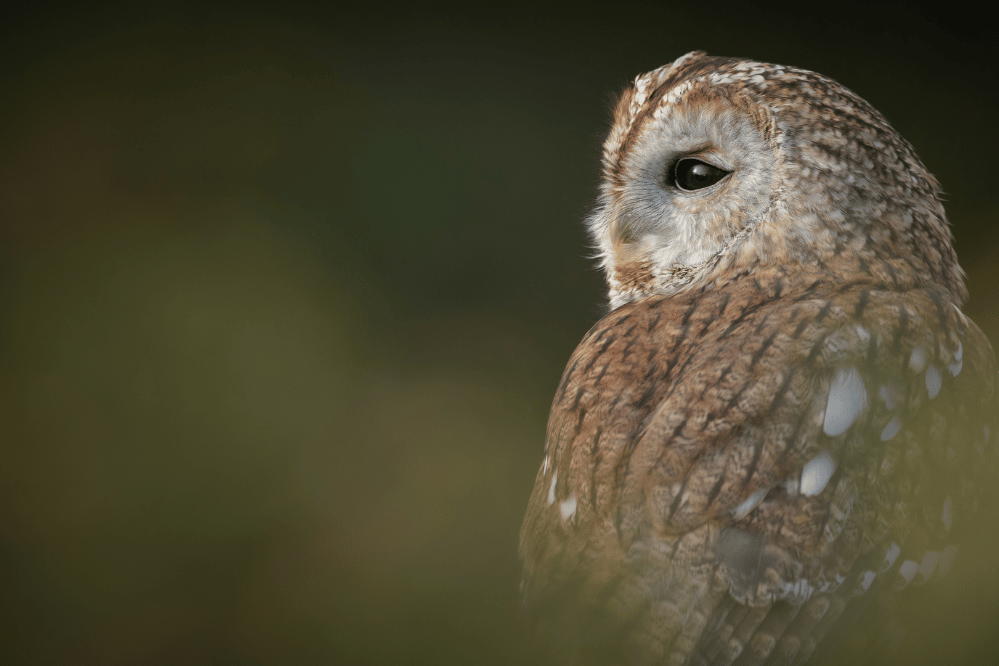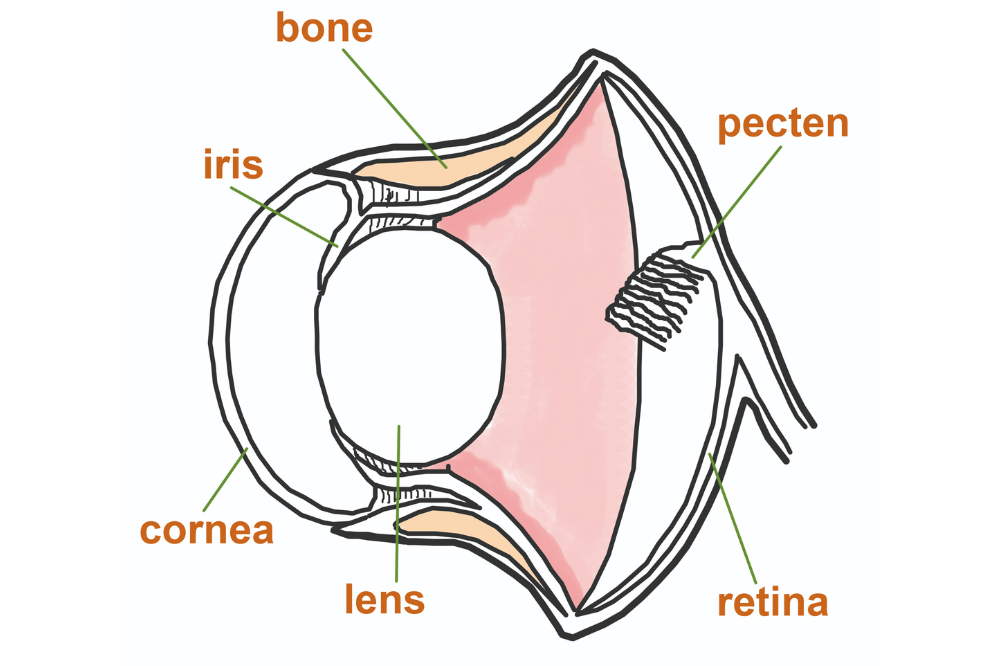Introduction
One of the first things that you notice when you see an owl is its large, forward-facing eyes; these play an important role in hunting for these largely nocturnal hunters.

About owl eyes
 Each of the owl’s eyes is held within a rigid tube, something that severely limits the bird’s ability to move its eyes; owls cannot roll their eyes, for example.
Each of the owl’s eyes is held within a rigid tube, something that severely limits the bird’s ability to move its eyes; owls cannot roll their eyes, for example.
This may be one reason why owls have such a long and flexible neck, which can rotate through an arc of roughly 270 degrees. Because the owl eye is held within a rigid tube it also has a characteristic tubular shape (see diagram).
This shape helps to maximise the size and brightness of the image falling on the retina at the back of the eye – a useful adaptation for a nocturnal lifestyle. The image produced within a Tawny Owl eye has been calculated to be roughly 2.7 times brighter than that produced in a human eye under similar conditions.
The large size of the eye is quite staggering; between them, the two owl eyes occupy at least 70% of the skull’s volume, hence the huge eye sockets evident in an owl’s skull.
How sensitive is owl eyesight?
The visual sensitivities of owl eyes have been measured in just a few species, with the Tawny Owl perhaps the best studied of these. By determining the minimum amount of light that can be detected by an individual owl (a measure referred to as the ‘absolute visual threshold’) it is then possible to make comparisons with other species.
On average, Tawny Owls show slightly higher visual sensitivity than humans, but because of known variation within both human and owl populations, there will be some people who have greater visual sensitivity than certain Tawny Owls. Importantly, however, the visual sensitivity of a Tawny Owl is about 100 times greater than that of a diurnal bird like a pigeon. This increased sensitivity allows an owl to move around and hunt at night.
Owl eyes in the real world
Knowledge of the sensitivities of owl vision can be used alongside information on the amount of light available at night within different habitats.
For a Barn Owl, hunting at night across open fields, there is enough natural light from stars to enable it to see its way around and to find food. For a Tawny Owl, hunting within closed canopy woodland, there will be a lot less natural light available. This may be one reason why Tawny Owl tends to be a perch and wait hunter, using its knowledge of its territory to find food without the risk of blundering around into branches.
Some owl researchers have noted how owls accidentally flushed from a perch sometimes fly into a tree trunk or branch by accident, almost as if they couldn’t see it. It is sometimes suggested that owls cannot see very well during the daytime but this isn’t true. During daytime, the visual acuity of an owl's eye is similar to that of a pigeon, though the owl is certainly less able to make fine-scale colour discriminations than diurnally-active birds or humans.
While eyesight is an important sense for an owl, it is invariably used alongside the sense of hearing, which is also well-developed in these birds.